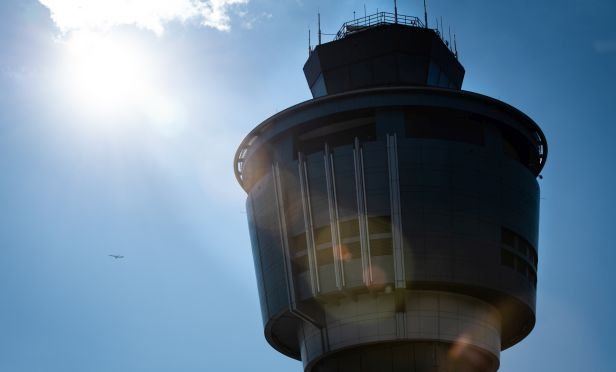 The air traffic control tower stands at LaGuardia Airport (LGA) in the Queens borough of New York, U.S., on Friday, Jan. 25, 2019. The Federal Aviation Administration temporarily halted flights into New York's LaGuardia Airport because of a shortage of air-traffic control staff, escalating the pressure on President Donald Trump and lawmakers to end the government shutdown. Photographer: Mark Kauzlarich/Bloomberg
The air traffic control tower stands at LaGuardia Airport (LGA) in the Queens borough of New York, U.S., on Friday, Jan. 25, 2019. The Federal Aviation Administration temporarily halted flights into New York's LaGuardia Airport because of a shortage of air-traffic control staff, escalating the pressure on President Donald Trump and lawmakers to end the government shutdown. Photographer: Mark Kauzlarich/Bloomberg
The aviation system's safety still hasn't fully recovered from the 35-day U.S. government shutdown that halted progress on new technology and stopped reviews of incident reports, the air-traffic controllers' union president told Congress.
U.S. aviation was “on the verge of unraveling” when the partial shutdown ended Jan. 25. Flights were delayed into New York's LaGuardia Airport as controllers didn't report to work due to illness and fatigue, said Paul Rinaldi, president of the National Air Traffic Controllers Association.
Recommended For You
Want to continue reading?
Become a Free PropertyCasualty360 Digital Reader
Your access to unlimited PropertyCasualty360 content isn’t changing.
Once you are an ALM digital member, you’ll receive:
- Breaking insurance news and analysis, on-site and via our newsletters and custom alerts
- Weekly Insurance Speak podcast featuring exclusive interviews with industry leaders
- Educational webcasts, white papers, and ebooks from industry thought leaders
- Critical converage of the employee benefits and financial advisory markets on our other ALM sites, BenefitsPRO and ThinkAdvisor
Already have an account? Sign In Now
© 2025 ALM Global, LLC, All Rights Reserved. Request academic re-use from www.copyright.com. All other uses, submit a request to [email protected]. For more information visit Asset & Logo Licensing.








